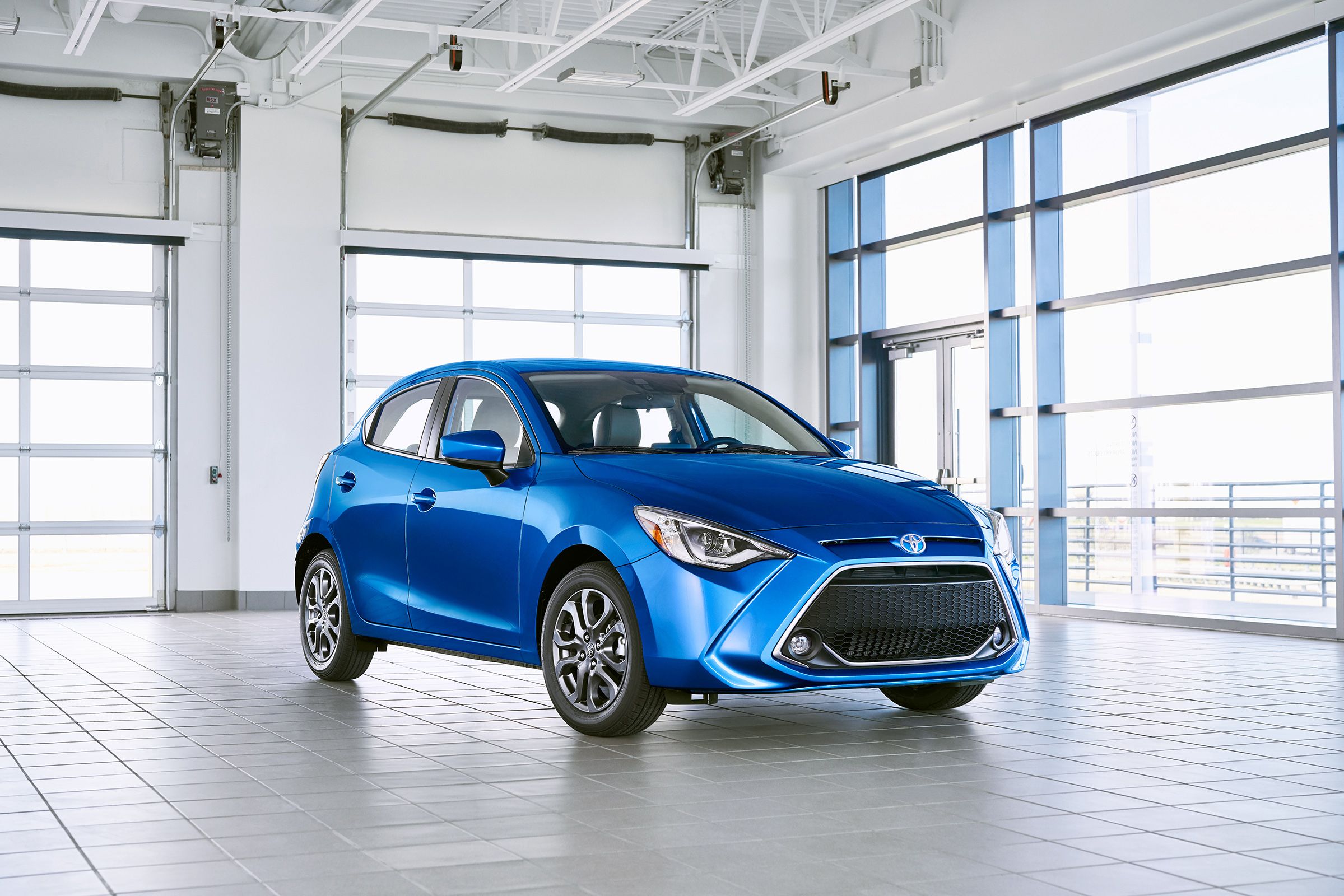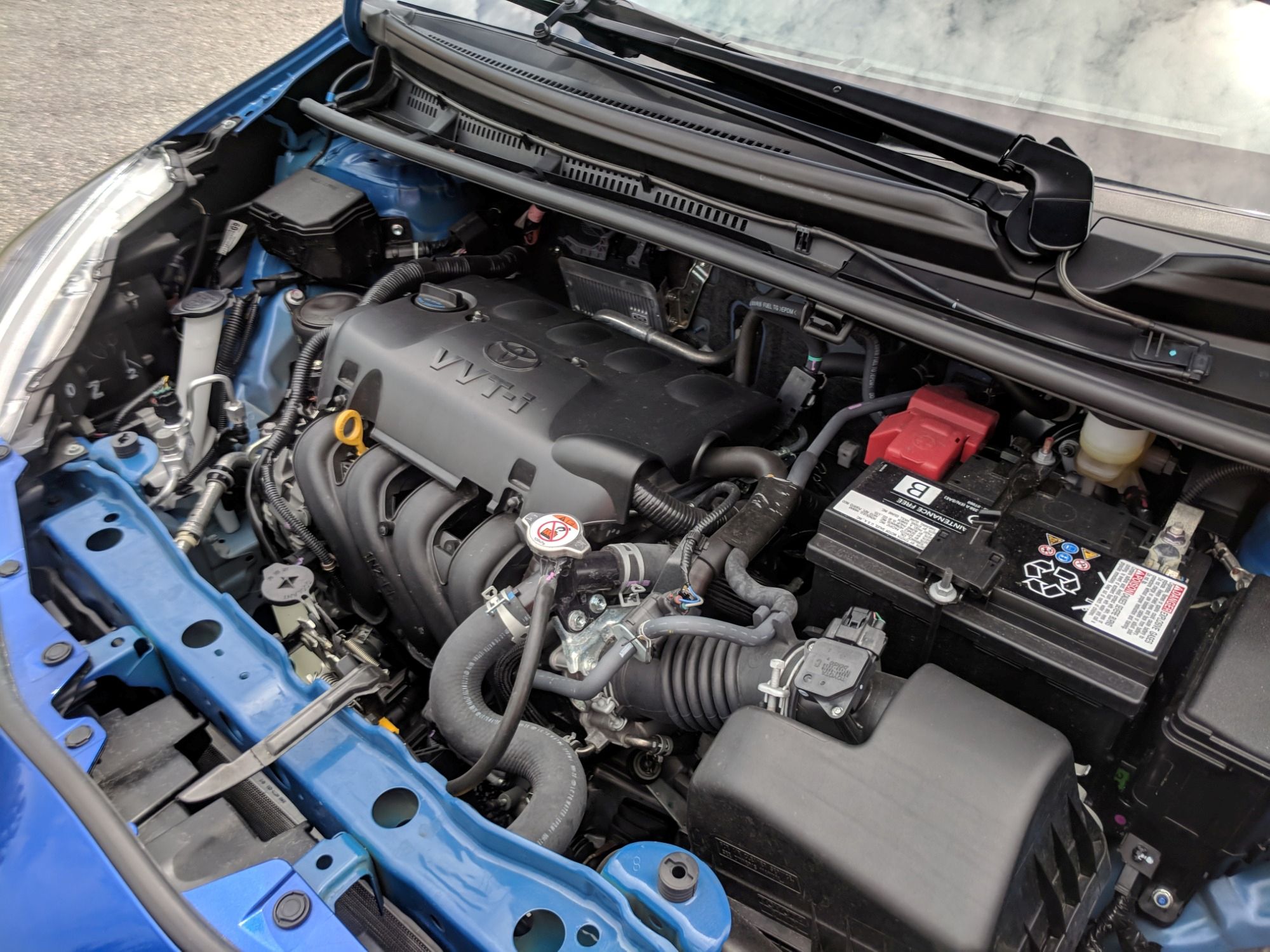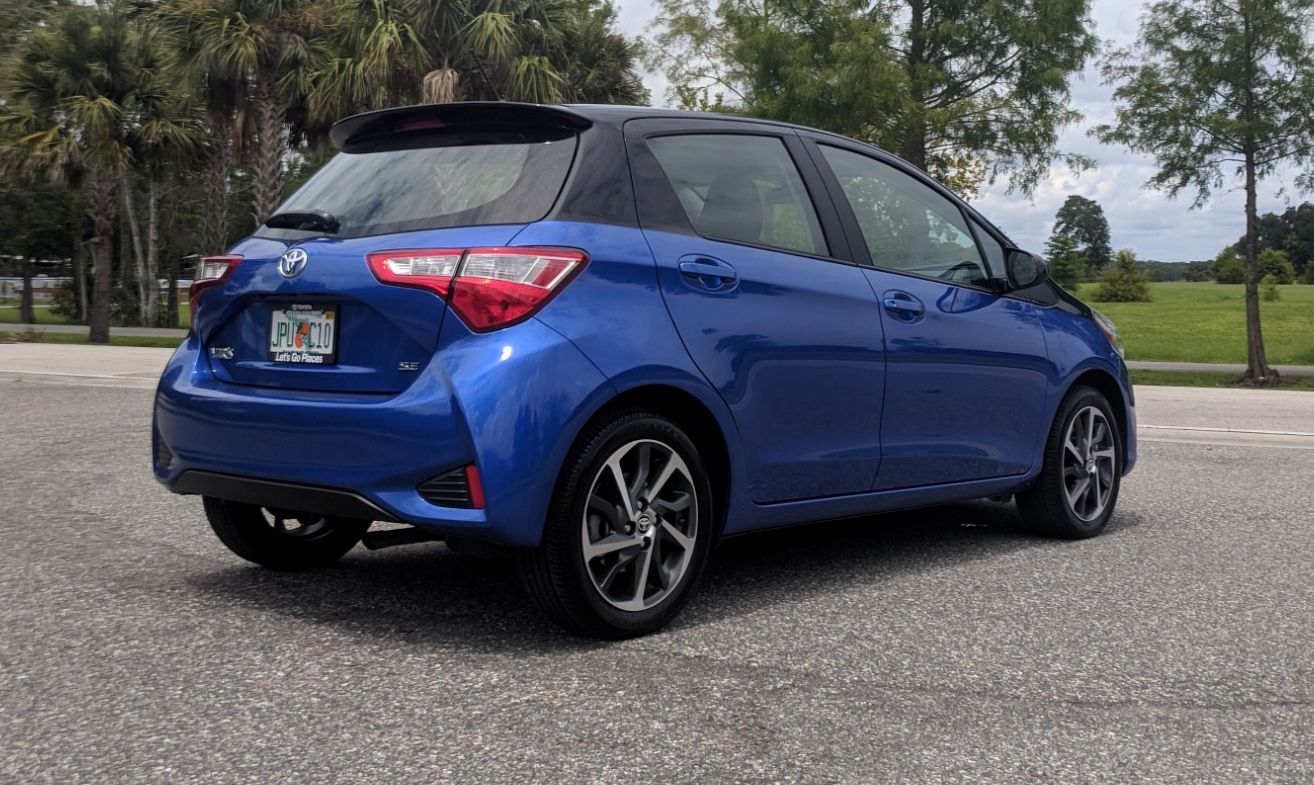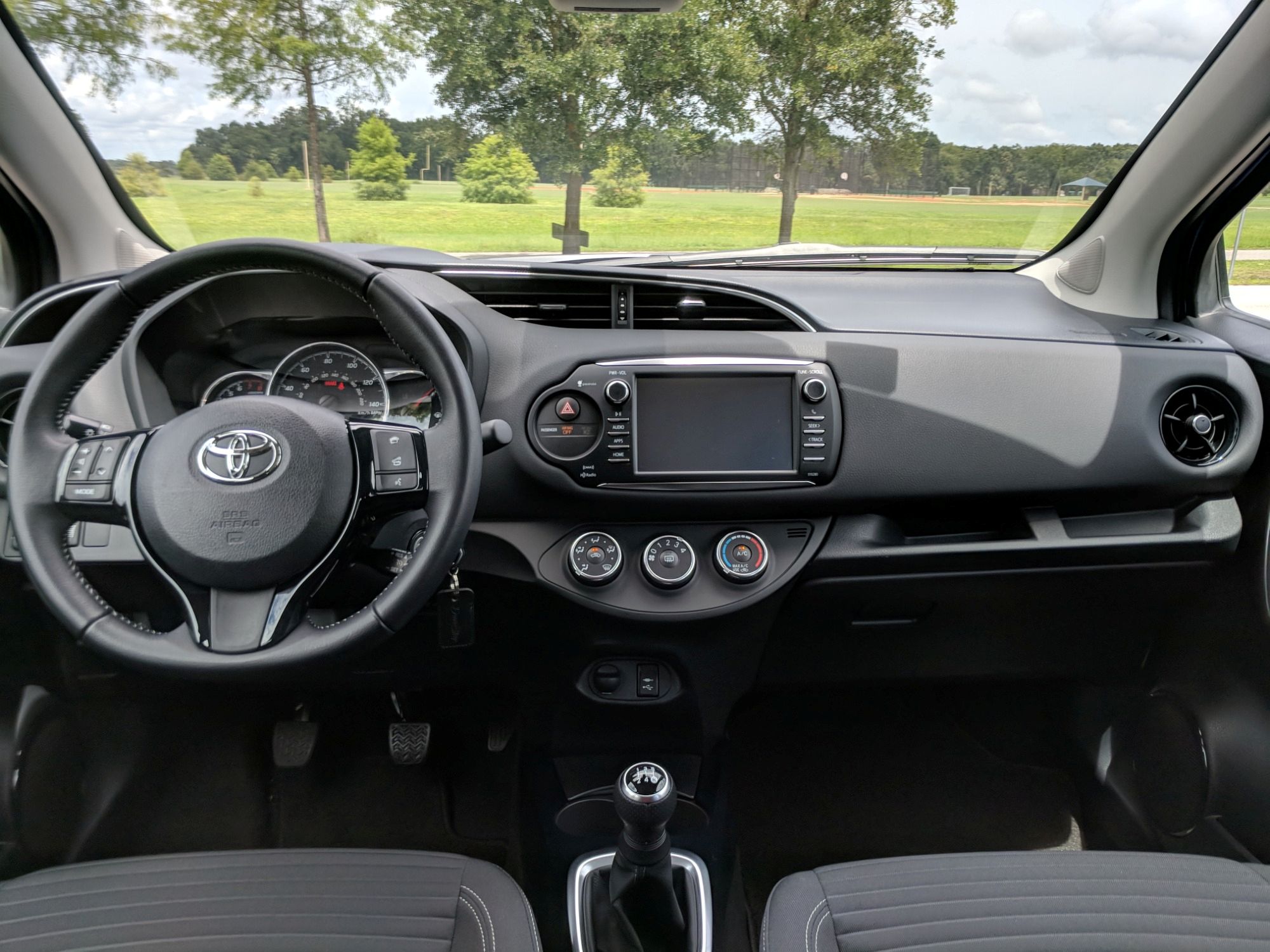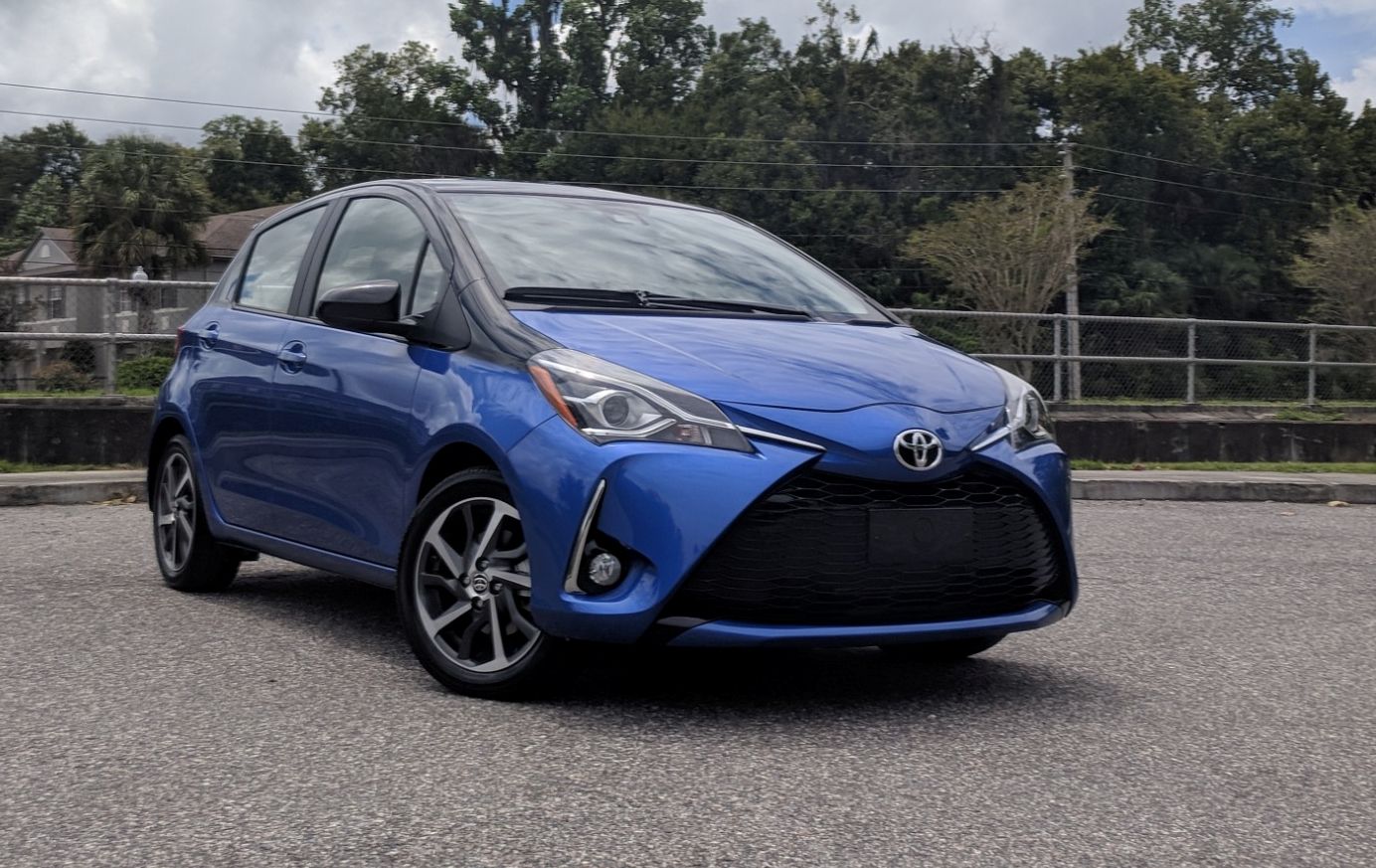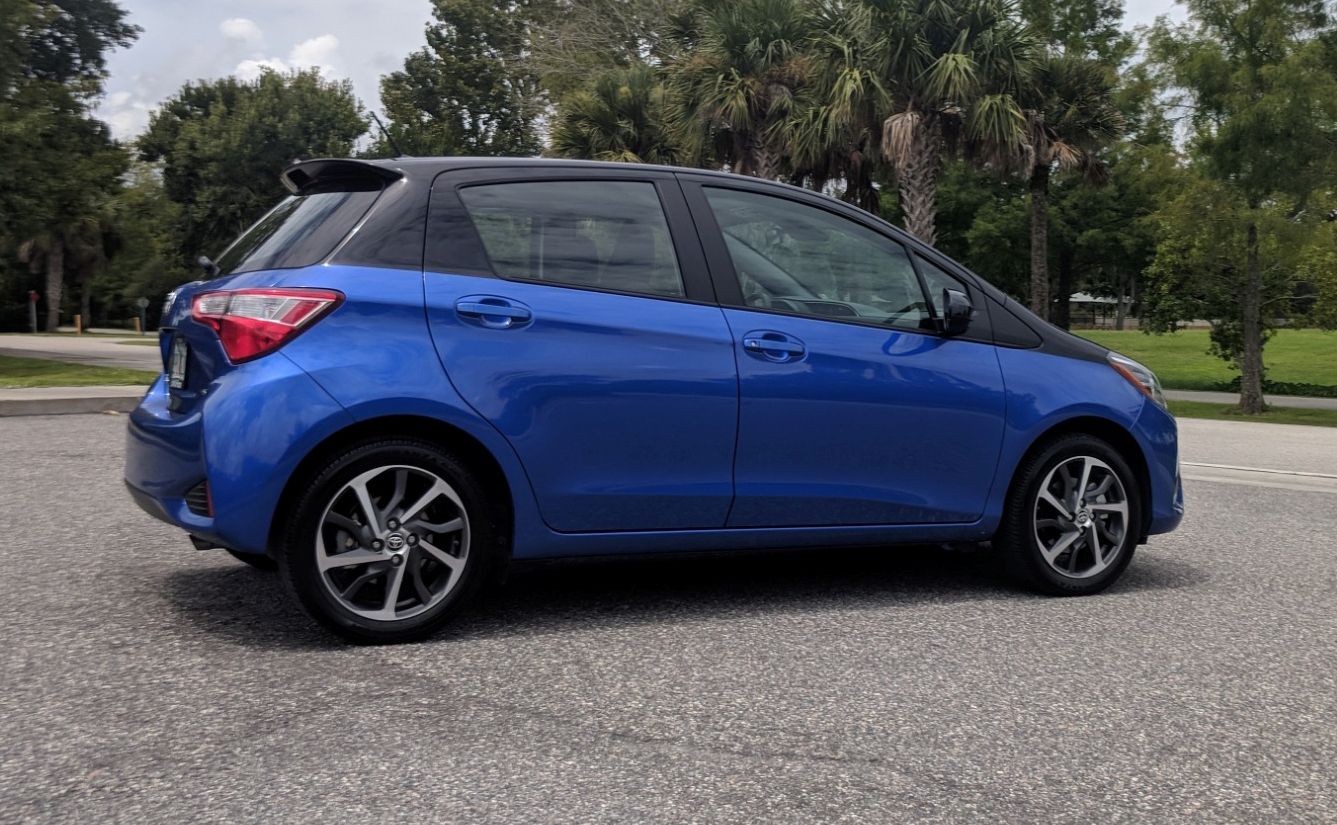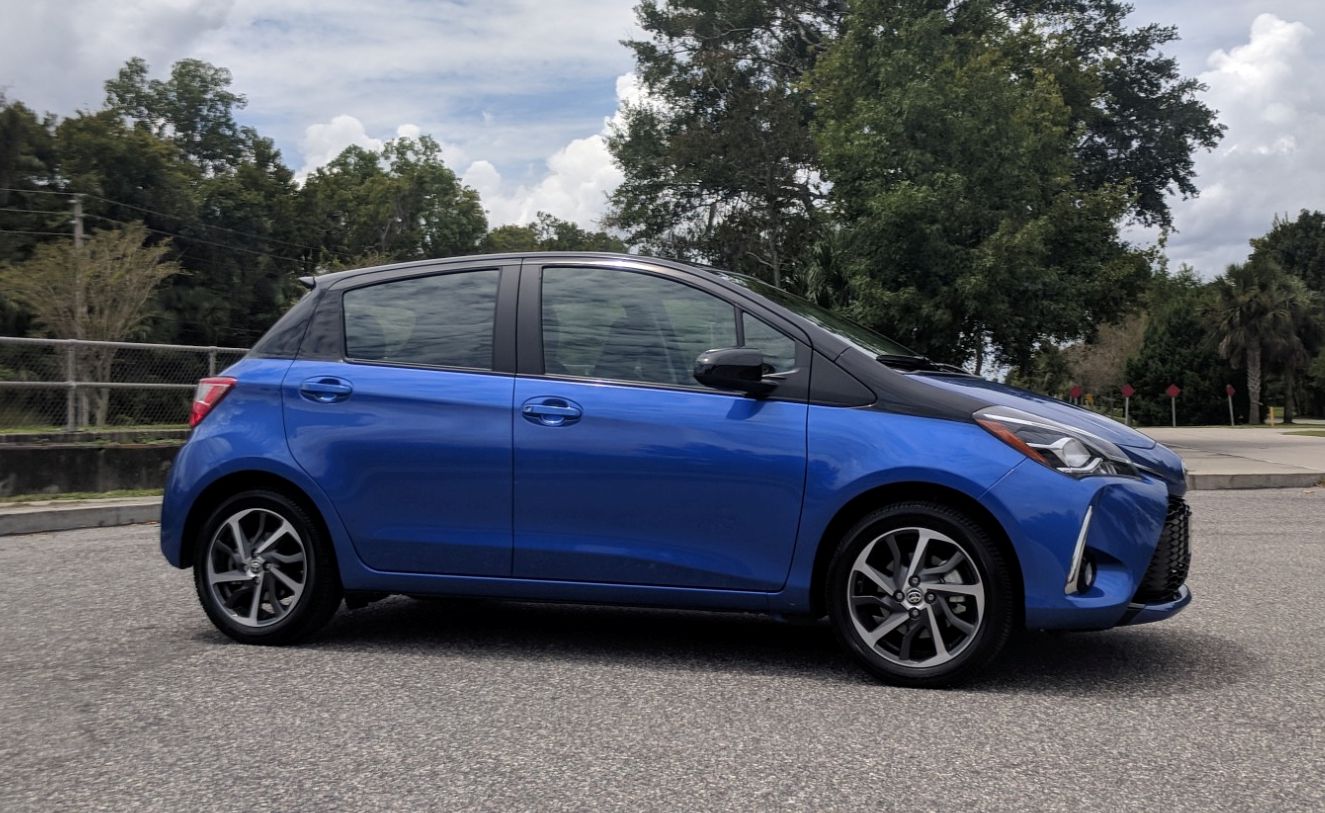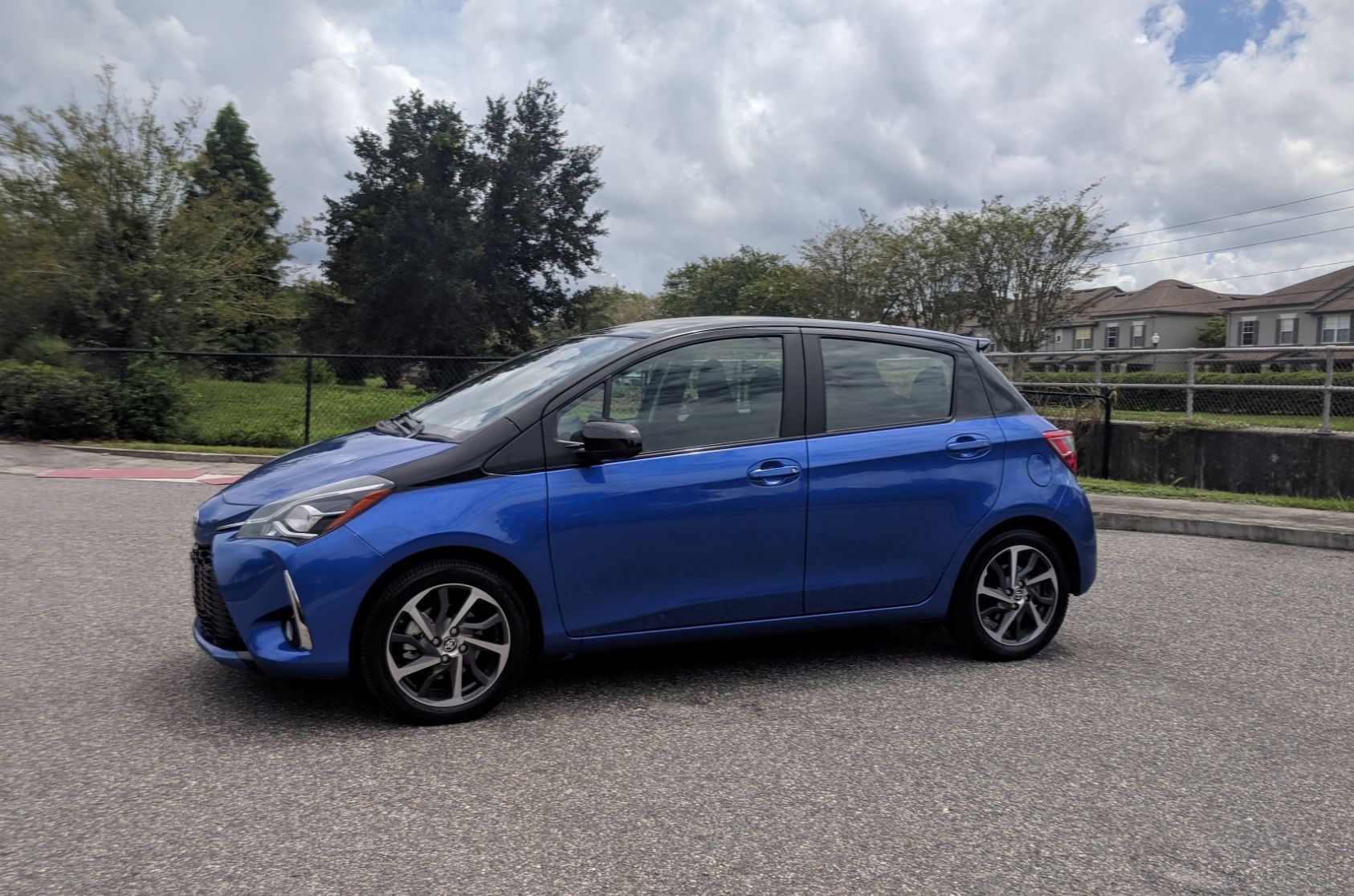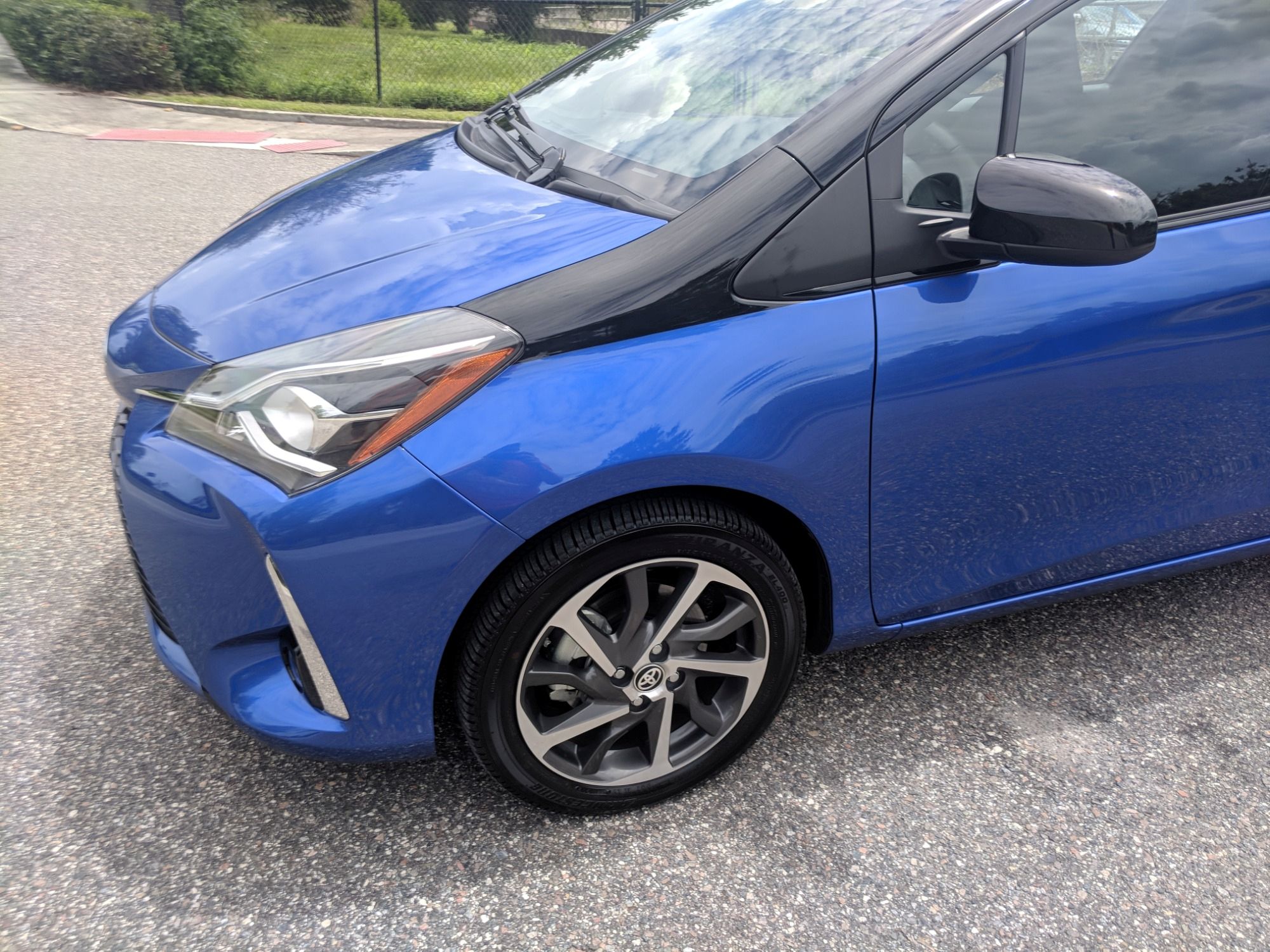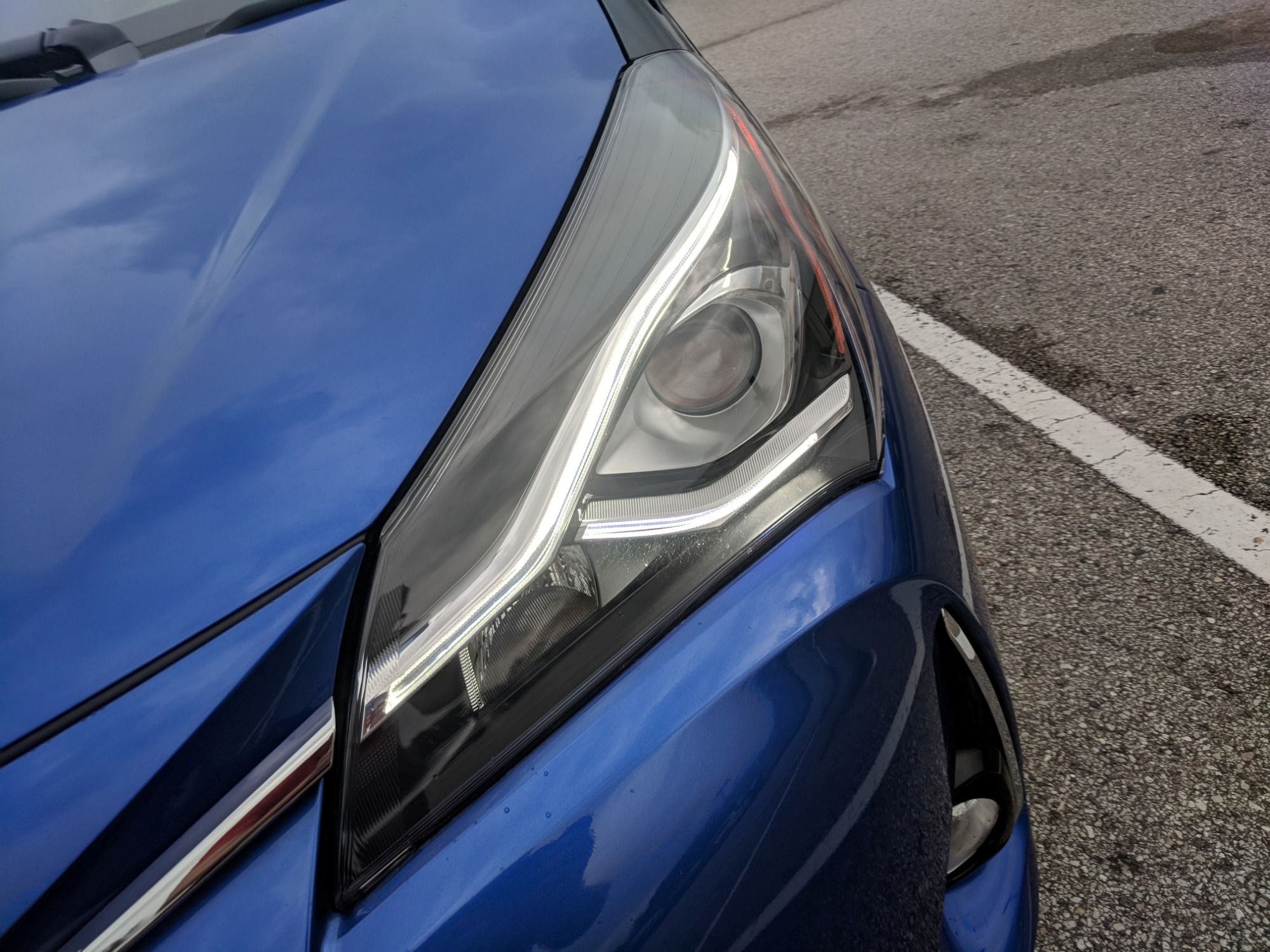2018 Toyota Yaris Test Drive Review: Can A Manual Make It Fun?
If there's one thing American consumers love, it's small hatchbacks with manual transmissions. Wait... that doesn't sound right. Oh yes, of course - American consumers love funky-looking crossovers and SUVs with automatic transmissions, much like the Toyota C-HR I reviewed a few weeks ago. Hatchbacks and manual transmissions have been the equivalent of sales poison in the US, so it seems difficult to believe Toyota has persisted with its compact Yaris hatchback for so long.
2018 Updates
The sub-compact car segment has been sharply declining in the US, with total sales falling below 100,000 in the first quarter of 2018 - the lowest it has been in over a decade according to CarSalesBase. The Yaris sits near the bottom of the segment in terms of sales, only surpassing 200 units in one month of 2018.
Though the Yaris received a minor facelift for the 2018 model year, it remains one of the most basic, yet affordable, cars on the market. My test car was an SE trim, the sportiest (and most expensive) model in the Yaris lineup. Sadly, it seems Toyota killed off this trim partway through the model year so only the L and LE trims remain in three-door and five-door body styles. You may still be able to find a leftover SE sitting on a dealer lot, but it has been removed from Toyota's online configurator.
Toyota also sells a sedan version of the Yaris known as the Yaris iA, which is essentially a rebadged Mazda 2, a car not sold in the US. In addition to the multitude of other sub-compact cars which outsold the Yaris this year, the Mazda-built Yaris iA sedan outsold its Toyota-built counterpart by more than two-to-one.
Other cars in this segment include the best-selling Nissan Versa, the soon-to-be-discontinued Ford Fiesta, Honda Fit, Hyundai Accent, Kia Rio, Chevy Sonic, Fiat 500, and Mitsubishi Mirage. Although it may sound harsh, there are very few cars on that list I wouldn't recommend over the Yaris.
Let's start with what's new for 2018, aside from the short-lived SE trim, which I'll discuss later. Toyota has attempted to modernize and "sportify" the Yaris with a revised front fascia, 16-inch aluminum wheels for the SE trim, a three-spoke steering wheel with audio controls, and a new sport instrument cluster with an ECO-driving indicator and outside temperature gauge. Surprisingly, the updated instrument cluster is still missing several important readouts including average MPG, instant MPG, range-to-empty, and average speed, which have pretty much become standard on all cars in 2018.
Toyota has also added a few standard safety features on all Yaris models including pre-collision warning, lane departure warning, and automatic high beams. Yes, it doesn't sound like much, and many of competitors in this segment offer more innovative safety and technology features. The Honda Fit for instance, in addition to having a more ergonomic interior layout than the Yaris, even offers adaptive cruise control at an affordable price.
The Technology... Or Lack Thereof
Moving over to the middle of the interior doesn't improve upon the antiquated feeling of the Yaris. The centerpiece of this interior is an Entune infotainment system with a simple, easy-to-use touchscreen. Unfortunately, the Yaris is not one of the recent Toyota models to receive Apple CarPlay, so the screen only performs basic functions including radio, Bluetooth, and traffic information. It was a bit surprising to see traffic information considering the Yaris doesn't actually feature built-in navigation.
Below the infotainment system sits basic, manual climate controls. Toyota doesn't offer any form of automatic climate control on the Yaris, even though it is offered in several of its competitors. Just to cap off the dated feel of this interior, the Yaris still requires an old-fashioned key to start - no form of keyless push-button start is available.
Interior Layout
As you may expect for a car costing less than $20,000, the materials in the cabin are absurdly cheap. Small cars like this are often known for having interiors with lots of hard plastic, but the Yaris feels especially shoddy. During my week of driving, I noticed the door trim would squeak if you pressed it and the entire center console wasn't fastened down properly, so it would shake left and right. Rarely have I noticed poor build quality from Toyota, but this French-built Yaris felt like it could fall to pieces if you allowed a toddler to play around in it.
In terms of interior layout, there are a few storage areas littered around the cabin, but only a few can accommodate large items. There is a small, lidded storage area in front of the cup holders as well as an oddly-placed bin above the left-most air vent, though I desperately yearned for a basic armrest with storage to place essential items and rest my arm as I shifted gears.
Drivetrain Options
Speaking of shifting gears, there are two transmissions offered in the Yaris. While the Mazda-built Yaris iA offers a modern six-speed automatic or manual transmission, the Toyota-built car soldiers on as one of the last cars with a four-speed automatic or a five-speed manual. Paging 1992, you can have your transmissions back. Both transmissions are mated to a 1.5-liter four-cylinder engine producing 106 horsepower and 103 lb-ft of torque.
The benefit of the lack of power is laudable, yet nowhere near class-leading fuel economy figures of 30/36/33 mpg city/highway/combined. The downside to barely cresting triple digit power figures is a 0-60 time of over 10 seconds. The Yaris is, not surprisingly very slow, but a curb weight of around 2,300 pounds manages to leave it capable of merging onto the highway with little difficulty. If you like to drive fast, you'll likely have to downshift into fourth to reach 80 mph - and if you want to hit 90 mph, you better have a decent tailwind.
How It Drives
Here's the part where I say that despite its lack of speed, the Yaris is fairly fun due in part to its lack of weight and joyous manual transmission. Or at least, this would be where I said those things if any of them were true. I am a firm believer that a low-powered manual transmission car can be a ton of fun - I even own a manual transmission Ford Fiesta ST. Unfortunately, the Yaris falls so far from being "fun" that I am beginning to question why Toyota even bothers selling it at all.
The wheel delivers almost no feedback to the driver and has a slow, yet short steering rack, making it difficult to take advantage of the car's small footprint in parking lots. My SE tester has what Toyota calls "Sport-Tuned" electric power steering - I have put Sport-Tuned in quotations because I simply cannot say what's sporty about it. If I had to guess, Toyota simply added a bit of weight to the standard steering rack without making it any more engaging in terms of feedback.
Likewise, the five-speed manual transmission did nothing to transmit any amount of fun. Instead, it merely made the Yaris feel less sluggish because I could downshift at will to squeeze out every ounce of power. The transmission throws were miles apart and the clutch biting point was high up in the pedal travel, making it difficult to shift in a sporty manner.
It seems like Toyota made a smart decision to remove the SE trim from the lineup because what little sporty flavor it had did very little to improve the overall experience. Toyota does sell the Yaris GRMN, a sporty, supercharged variant with 208 hp in Europe, though this SE model isn't similar in the slightest. I'd love to get behind the wheel of the Yaris GRMN, but Toyota has no plans to sell it in the US.
Useability
Despite not being fun-to-drive, the Yaris fares adequately as a practical hatchback. Front passengers have sufficient space, though the odd dashboard layout feels very in-your-face, creating an odd driving position. Rear legroom is 33.3 inches in three-door and five-door body styles, which is around six-inches less than the Honda Fit. The rear seats can comfortably accommodate two adults, but the middle seat will feel cramped due to the car's narrow hips. Middle seat occupants will also notice their seatbelt is housed in the ceiling - a throwback to SUVs from the 1990s. Likewise, trunk space is 15.3 cubic feet, which trails the Honda Fit.
Pricing
There are very few areas where the Yaris excels in this segment, but affordability is one of them with prices starting at $15,365 for the base three-door L trim. However, opt the five-door SE trim and the price balloons to $18,260 as-tested. Even though it is cheap, the Yaris is far from the most affordable car in the class with the Nissan Versa ringing in as the cheapest car on sale in the US at just $12,360. The Yaris is also undercut on price by the Ford Fiesta, Kia Rio, Hyundai Accent, and Mitsubishi Mirage.
Recommendation
The competition has almost unanimously outclassed the Yaris in terms of power, technology, safety, and affordability. Even Toyota's own Mazda-built Yaris iA manages to outmatch it in terms of interior quality and driving joy. While I would take a strong look at the Yaris iA, the Yaris hatchback remains a non-compelling option in the sub-compact segment and earns a rating of Shop Around.

